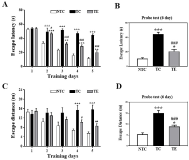
The main purpose of this study was to investigate the effects of treadmill exercise and bright light exposure on serotonin expression in rat brain. Male Sprague-Dawley (SD) rats were randomly assigned into four groups (n=9 in each group), specifically, control group (CG), exercise group (EG), light group (LG), and exercise+light group (ELG). Rats in EG were subjected to treadmill exercise (5 days/week, 30 min/day), LG rats exposed (5 days/week, 30 min/day, 10,000 Lux), ELG rats subjected to treadmill exercise in combination with exposure, and CG rats remained sedentary over a four-week period. We observed a significant increase in serotonin expression in the raphe obscurus nucleu and the midbrain of rats in EG, LG, and ELG, compared to CG. Interestingly, serotonin expression was significantly increased in ELG, compared to EG and LG in the raphe obscurus nucleu via immunohistochemistry. In the western blot, it showed a increased pattern in ELG, compared to EG and LG. The overall results showed that treadmill exercise and/or bright light had positive effects on serotonin expression in the brain. Therefore, we suggest that moderate exercise or exposure to bright light during a growth child may be beneficial in brain action.

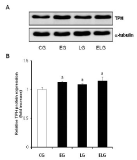
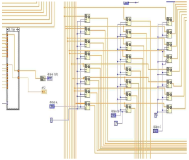
This study was to develop and to apply real-time neurofeedback system for psychological self-regulation of shooters. Neurofeedback system was developed with expert meetings consisting of 8 sport psychology, EEG, and sport engineering experts based on Labview program. Developed neurofeedback system was applied to 4 college shooters for 10 sessions(1 session/week, 30 mins/session). Collected EEG wave data were analyzed by paired sample t-test and independent sample t-test. The results were as follows: Firstly, based on user experience concept neurofeedback system was developed which easily perceived neurofeedback information as traffic lights with minimizing visual search activities. Secondly, after neurofeedback system application right brain activation level of shooters(except one shooter) were increased compared to left brain activation. Based on the results of this study, neurofeedback system can apply various sports and contribute to help athletes’ self-regulation and athletic performance enhancement in sport field.




PURPOSE Neuromarketing measures and analyzes the unconscious response of consumer brain waves to marketing stimuli in real time. This study examined how a sensational scene (accident) in a sport game influences the sponsorship effects through electroencephalography (EEG) analysis. METHODS The current study uses an experimental method. First, as an experimental stimulus, a video of F1 racing edited in a total of 9 min and 39 s was used, and an accident scene was inserted in the middle of the video. A total of 46 people participated in the experiment, and all participants watched the F1 video, including the accident scene. Participants' brain waves were observed in two prefrontal and two occipital lobes. The relationship between scene sensation and sponsorship effect was analyzed based on alpha waves and the sponsor brand recall measured by questionnaires. RESULTS First, the accident scene of the race caused the power of alpha wave to be abruptly reduced (i.e., alpha blocking). Second, the difference between the alpha power level of the group that recalled the sponsor brand and that of the group that did not recall was statistically insignificant; hence, the hypothesis was rejected. Third, the right-brain dominance (negative emotion) in the accident scene of the race was statistically insignificant; therefore, the hypothesis was rejected. Finally, the group that recalled the sponsor brand showed a left-brain dominance (positive emotion), which was statistically significant. CONCLUSIONS This study confirmed the marketing communication and neuromarketing theories on the sponsorship effects created by stimulation, attention, and memory in a sport sponsorship setting, observing alpha blocking phenomena in a sensational scene (accidents). In addition, it was revealed that the group that watched the same accident scene relatively positively and exited remembered the sponsor brand better than the group that did not watch it. The result implied that sport fan’s personal trait (e.g., sensation seeking) to sensation in sponsorship activities affects the sponsorship effect. The results also emphasized the importance of selecting target customers of sports fans in sponsorship to maximize sponsorship effects.

The cerebellum is one of the major parts of the brain involved in the motor control including motor coordination, muscle tone, balance, and the learning of motor skills. The purpose of this review paper was to explore of pathophysiology, anatomical function and neurophysiological mechanism for cerebellum. For this, we sought to examine of previous study related cerebellar disease. Specifically, this paper suggested that motor deficiency of limb movements, coordination, gait/posture balance, adaptation of during movement execution through information proprioception or kinaesthesia, and motor planning and programming of cerebellar patients. We expect that this review will be able to offer the useful information to research. For example, movement scientists will provide an academic information about cerebellar ataxia. Patients and their families will provide relevant information to the daily life (e.g., management and rehabilitation exercise).

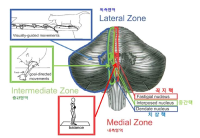
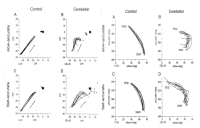
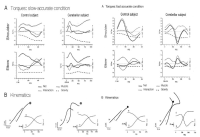


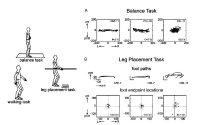
PURPOSE The purpose of this study was to examine the effects of an eye movement exercise intervention on cognitive function and prefrontal cortex connectivity in the elderly with mild cognitive impairment. METHODS Ten older adults with mild cognitive impairment participated in eye movement exercise consisting of saccadic eye movement, pursuit eye movement, vestibular-ocular eye movement, and vergence eye movement for 4 weeks. Cognitive function (MoCA-K), reaction time during stroop task, and prefrontal cortex connectivity were measured using the functional near-infrared spectrometric analyzer (fNIRS) before and after the intervention. RESULTS First, cognitive function of the elderly with mild cognitive impairment showed significant improvement after the eye movement exercise (p < .05). Second, reaction time decreased significantly from 1.16 to 0.91 ms after eye movement exercise. Third, the strength of prefrontal cortex connectivity (left OFC - right FPC, right OFC - right FPC) increased after the intervention in the older adults with mild cognitive impairment. CONCLUSIONS The results of this study suggest that eye movement exercise is an effective intervention for improving cognitive function through improvement of brain functional connection in the elderly patients with mild cognitive impairment.
Purpose The purpose of this study was to investigate the effects of regular vigorous- and moderate-intensity aerobic exercise on serum brain-derived neurotrophic factor (BDNF) level, aging- and lifestyle disease-related blood components in middle-aged women. Methods The participants were recruited from a total of 19 physically healthy people aged 50-59 years, and were randomly divided into vigorous-intensity aerobic exercise (VIAE, n = 10) and moderate-intensity aerobic exercise (MIAE, n = 9) group. The participants were performed vigorous- and moderate-intensity aerobic exercise three times a week for eight weeks, and body composition measurement, graded exercise test, blood collection were performed before and after. Results Mean exercise time was significantly longer in the MIAE group than in the VIAE group. The V̇O2max was significantly higher in the VIAE group than in the MIAE group. Body weight, BMI, and body fat percentage were significantly lower than pre both groups. The BDNF concentration was significantly higher in the VIAE group than in the MIAE group. The dehydroepiandrosterone sulfate (DHEA-s) and insulin-like growth factor-1 (IGF-1) concentration were significantly higher than pre both groups. The free fatty acid and triglyceride concentrations were significantly lower than pre both groups, and HDL-C concentrations were significantly higher than pre both groups. Conclusions Vigorous-intensity aerobic exercise not only increases maximal oxygen uptake and blood BDNF level in middle-aged women, but also induces positive changes in aging-related hormones and lifestyle-related blood variables.

Purpose The purpose of this study was to investigate the effects of coupled high frequency rTMS and prism illusion in elderly stroke patients, based on the result of previous studies which discovered the effect of bilateral training, mirror rehabilitation treatment, and rTMS. Methods This is a case study of 4 stroke patients who were homogeneous on the basis of selection criteria such as brain injury area, duration of onset, degree of upper limb movement function. A total of 24 rehabilitation sessions were conducted three times a week during the training period, and TMS(transcranial magnetic stimulator), EMG, motion analysis system, and prism optical glasses were used for apparatus. Results The results of the study were as follows: Combined rehabilitation exercises were found to be beneficial to restore upper limb function in stroke patients. Particularly, the maximum speed of stretching and JTT(Jebsen-taylor Test) performance showed improvement after training. The amount of total map volume and MEP(megnetic evoked potential) increased in evaluation of neurophysiology. Conclusion The upper limb dysfunction of stroke patients could be restored by combine rehabilitation exercises.









It has been reported that continuous exercise and bright light exposure improved resistance to stress and reduced depression and anxiety, which were attributed to enhancing neurotransmitter GABA exocytosis and stimulating neurogenesis. In this study, the effects of treadmill exercise and bright light exposure on the expression of GABAAreceptor activity, calcineurin and calcineurin calcium signaling pathway-depended NFATc4, neurogenesis-related protein Cdk5 and specific regulator factor of Cdk in neurogenesis p35 in the hippocampus of rats were investigated by western blot assay. The expression of GABAAreceptor, Cdk5 and p35 significantly increased in the exercise+light group compared to the control group and the light group. The expression of KCC2 and NFATc4 significantly increased in the exercise+light group compared to all the other groups. And the expression of calcineurin significantly increased in the exercise+light group compared to the control group. The overall results showed that exercise and bright light stimulated neurogenesis of the hippocampus in rats and had positive effects on improving the brain neuronal function.


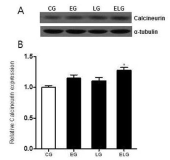
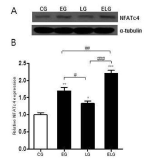
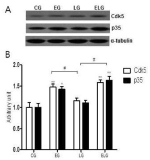

Purpose The aim of this study was to investigate the effects of treadmill exercise on mitochondrial quality control in the APP/sw transgenic mice model of Alzheimer's disease(AD). Methods The experimental mice were divided into non-tg-control (NTC, n=10), tg-control (TC, n=10), and tg-exercise (TE, n=10), and treadmill exercise was conducted for 12 weeks (15m/min, 60min, 5 times/week). And then, we measured the cognitive function using MWM and the brain cortex was evaluated to determine whether any changes in the oligomer Aβ, apoptotic-related factors, mitophagy and mitochondrial biogenesis. Results As a result, treadmill exercise significantly reduced oligomer amyloid and also had a positive effect on proteins (PUMA, Bax, Bcl-2) associated with apoptosis. In addition, through the treadmill exercise, PINK-1 decreased, and increased parkin, showing that active inhibition of mitophagy has been partially relaxed. It has been confirmed that the key autophagy markers LC3 and p62 significantly reduce p62 expression in TE group compared to TC group, and that LC3-II/LC3-I ratio tended to decrease, although not significant, increasing the activity of mitophagy. Next, proteins related to mitochondrial biosynthesis (SIRT-1, PGC-1α, Tfam, and COX-IV) have been identified, and the treadmill exercise has confirmed that the expression of all proteins has increased in part. Finally, cognitive has been shown to improve cognitive by shortening both swimming distance and time through treadmill exercise. Conclusions Thus, our finding suggested treadmill exercise alleviates cognitive dysfunction by improving mitochondrial quality control(mitophagy, mitochondrial biogenesis) and neuronal cell death via reducing amyloid accumulation, which may play a role in a preventive strategy for AD.



